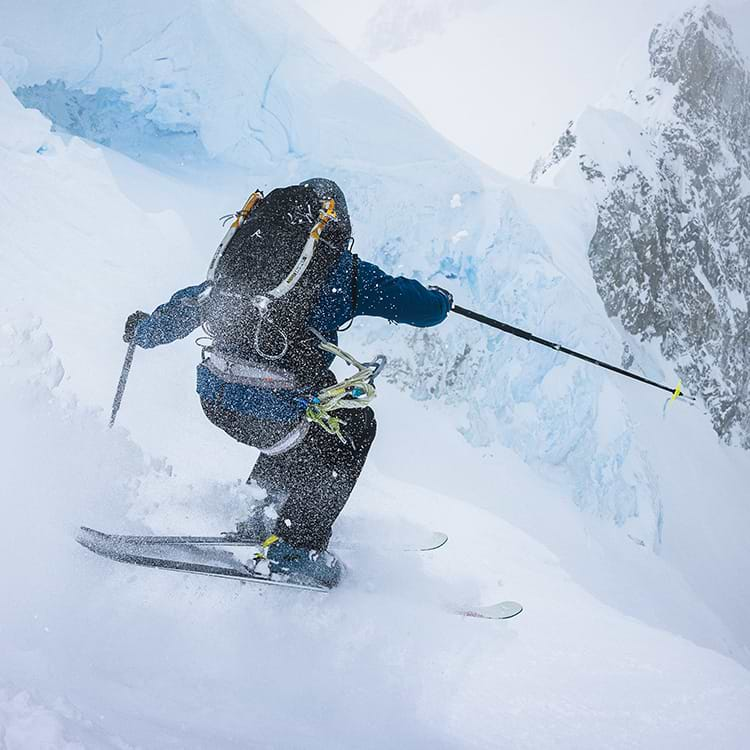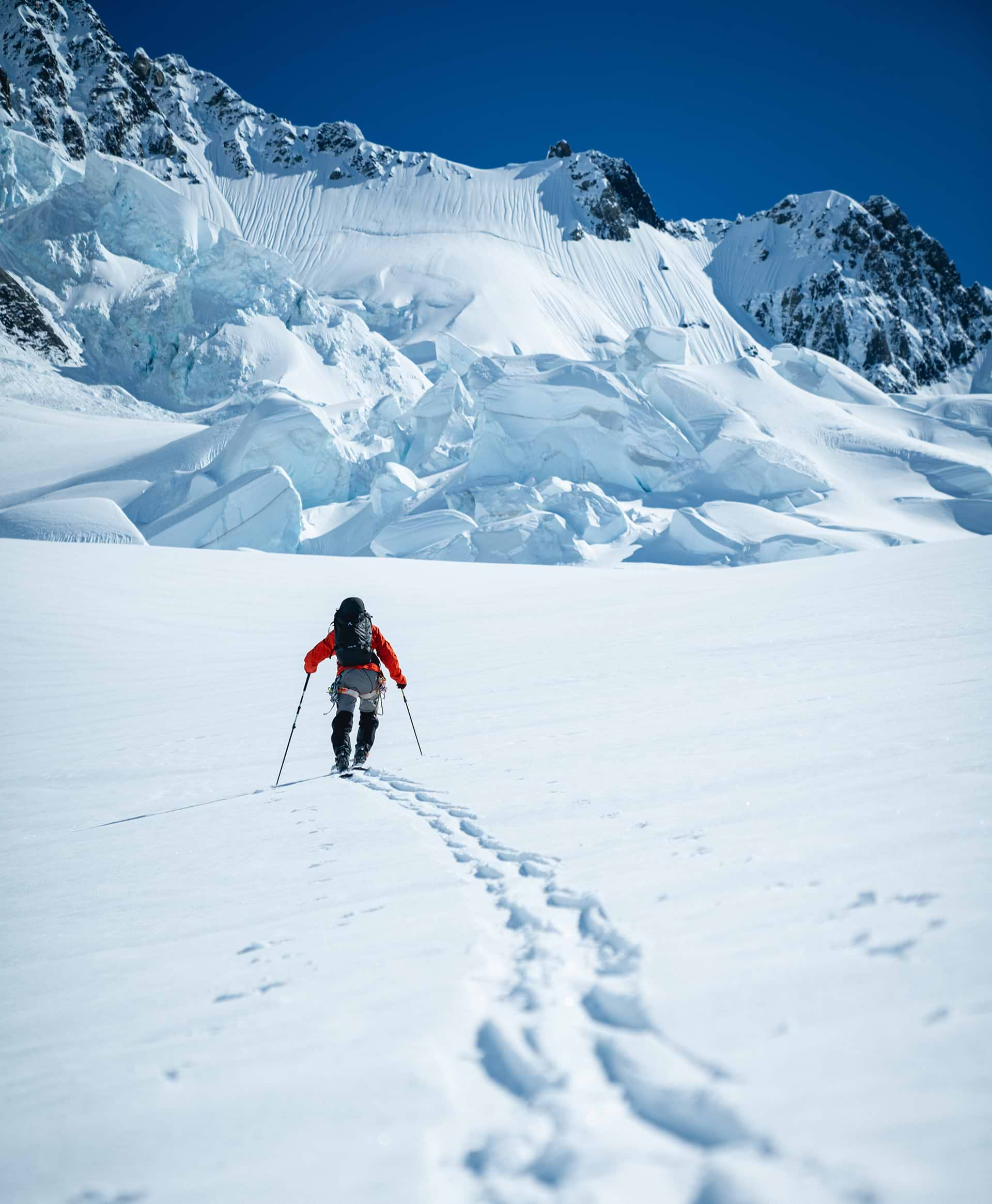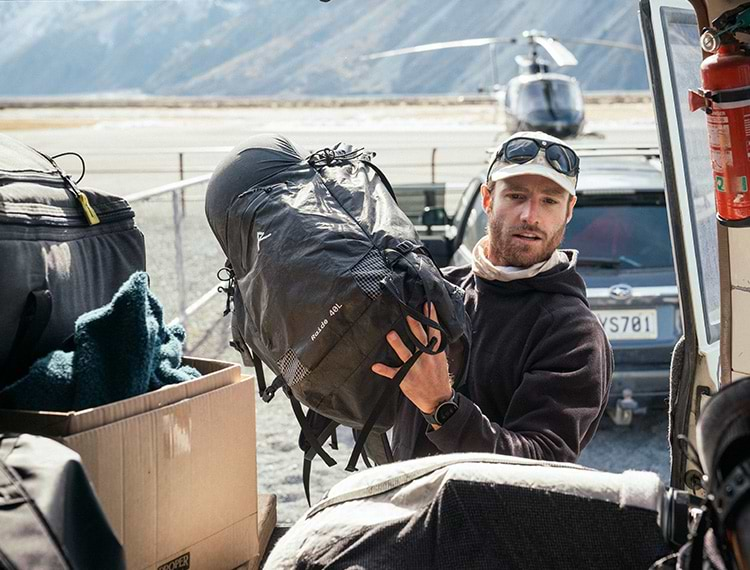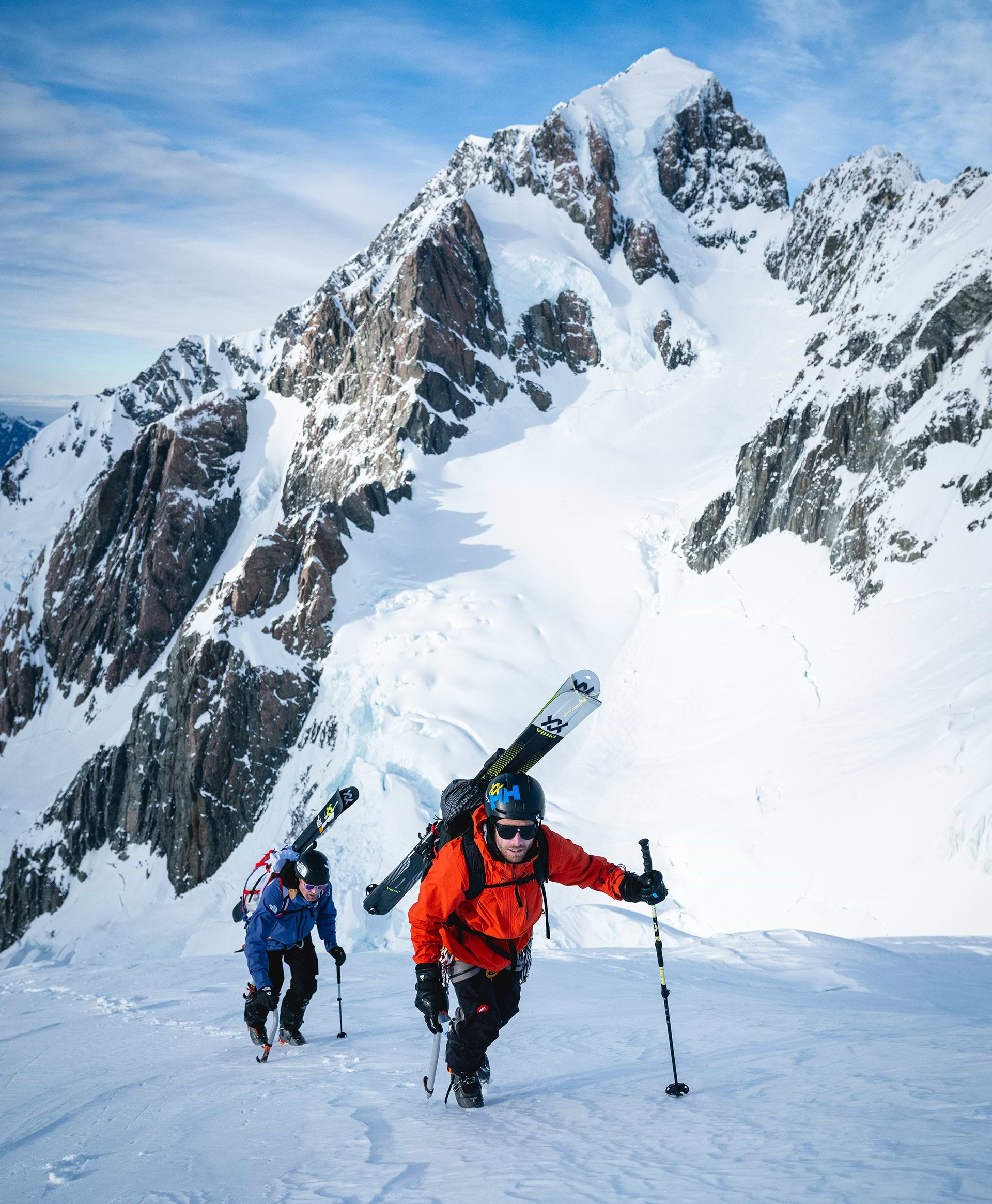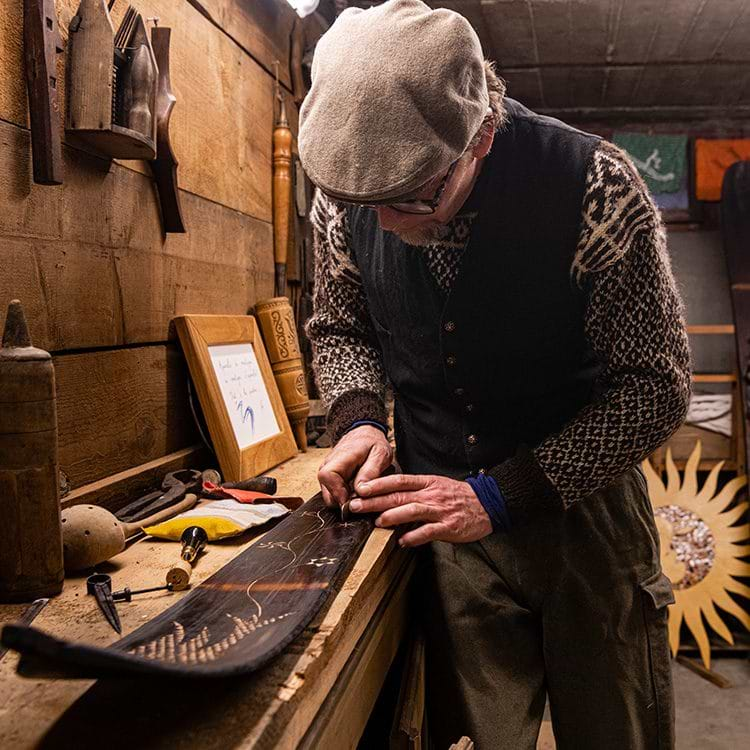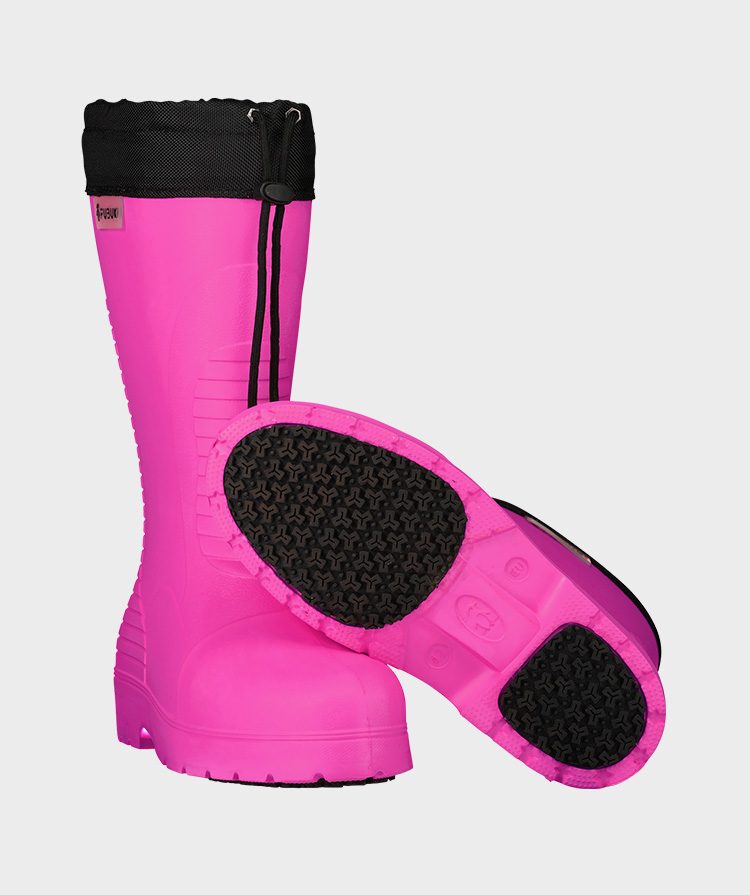The group of curious skiers we passed weren’t the first to ask. It was early season, and on each of the previous several days of touring near Revelstoke, my partner and I received the same query in the parking lot, at the trailhead, and on the skin track. In a decade of touring, I’ve never seen such buzz about a piece of equipment — much less one that had done virtually zero marketing since its launch just two months prior. Nobody even knew how to pronounce the name — it’s French for “steep” — but it seemed everyone wanted one.
Raide’s founder, Kyle Siegel, was as surprised as anybody by the momentum.
Kyle Siegel
The 33-year-old founder of Colorado-based Raide has had one foot in the engineering world and the other in a ski boot since graduating from university. Between stints at tech giants SpaceX and Snapchat, Siegel became a Level 3 ski instructor at Vail. He got a job at The North Face and had his first corporate outdoor industry role. He worked on performance outerwear — a highly sought-after position — for the company’s Summit Series line, developing equipment for some of the world’s greatest alpinists and skiers. As many do, he soon found that working in the outdoor industry doesn’t always equate to spending more time skiing, so he returned to tech. However, the experience taught him to speak to factories and navigate the product development lifecycle.
Kyle Siegel
As Siegel progressed as a skier, his eyes opened to the advances and shortcomings of technical gear, and he began to tinker. “I think everyone progresses with their gear,” he says. “Maybe you start super maximalist, then you go super minimalist, and then you find a balance between that’s right for you. I was going through that process and growing frustrated that I couldn’t find what I wanted out there.”
Skiing the 4,057-metre (13,310-foot) Tahoma Glacier at Mt. Rainier was the breaking point Siegel needed to propel his creativity forward. The highest volcano and most glaciated peak in the contiguous United States, it’s a long, complex objective that requires numerous transitions, careful management of nutrition and hydration, and frequent adaptation to the peak’s mercurial weather. Unsatisfied with his pack’s ergonomics, fit, and function, he got home determined to design his own.
Kyle Siegel
He used his experience at The North Face to find a factory to manufacture his first Raide design. Today, the pack strikes the balance of everything you need and nothing you don’t. It’s lightweight — 1,090 grams, with a stripped-down option at 900 grams — but far more featured than the lightest Dyneema top-loaders. The goal wasn’t to design the lightest pack on the market but the most efficient.
“Everyone in skiing was equating low weight with speed, but I felt like there was more to the story,” Siegel explains. “You need it to be light, but at some point, there are diminishing returns [that] make you slower. No one was combining lightweight gear with good function and good style.”
Raide is also in the process of manufacturing more than just a single pack designed for ski mountaineering. A range of diverse offerings will come to market next winter, including several ski packs featuring new avalanche safety technology, soft-shell pants, a forward lean modification kit for Technica Zero G boots, and a running belt that has already been launched. Siegel acknowledges it’s an eclectic mix, but he’s methodical about the products he develops and refuses to fill a category simply so he can offer everything.
“I want every product to solve a problem in the field and be the best on the market,” Siegel says. “Innovation to solve problems for human-powered movement in the mountains — while trying to nail the balance between function, style and speed — that’s the thread that ties everything together.”
Raide may be the antithesis of the current trend of mass appeal and generic marketability. While competitors rapidly expand with accessible offerings to meet the surging new participation in mountain sports, Siegel’s company caters to what he calls “the tip of the spear” — avant-garde skiers, runners, and climbers pushing alpine progression.
Kyle Siegel
Raide doesn’t have investors. Siegel believes it’s essential to keep Raide’s focus on design and quality first, untethered from business consultants questioning market viability. He wants to design creative solutions that push the progression of alpine gear; the industry will decide if it’s worth the price point.
“If I was just going to try to make the best ski boot possible, if it’s a $2,000 ski boot, that’s fine,” Siegel speculates. “I’m interested in if I can come up with something better by lifting cost as a constraint.”
Raide manufactured 2,000 of its first iteration of ski packs. It was fall in the Northern Hemisphere, and the prototypes had only been tested in the field twice—once in New Zealand and once in Argentina. Siegel didn’t know if he’d ever sell through his first run. He thought it could take years.
Raide sold out its first run of packs just five months later.
It’s been a blistering pace, but Raide is fast becoming commonplace in the hallowed grounds of ski alpinism: the Tetons, Chamonix, the Alaska Range, British Columbia’s Selkirk and Coast Ranges, and Colorado’s San Juans. As Raide looks to increase its production with several new pack releases dramatically, Siegel’s bet will once again be put to the test.
“This upcoming winter is going to be huge for Raide,” Siegel says with a hint of nervousness. “I’m going to find out if my hypothesis is true, that it is a big enough market.”
(BTW – there’s no accent on the “e,” so it’s just raid.)

